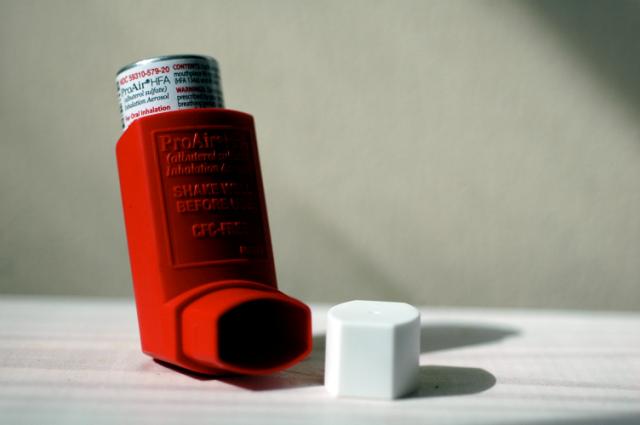Playlist
Show Playlist
Hide Playlist
Case Study: Shortness of Breath
00:01 Hi. We're gonna be talking about asthma and chronic obstructive pulmonary disease or COPD. 00:07 We're gonna be talking about these things together, because there's a lot of overlap between these two conditions. 00:13 Other both obstructive lung diseases, there are definitely differences as well. 00:17 And we'll kind of highlight those along the way during this lecture. 00:21 So start off first with the case study, in a 76-year-old woman, who comes to the emergency department with the chief complaint of shortness of breath. 00:29 She reports that her difficulty of breathing begun gradually over the last three days. 00:34 And just became significantly worse today. 00:37 So she decided to come to the emergency department. 00:39 When you walk in the room, what you see is you see a patient that has wheezing, audible wheezing, and it's also had significant respiratory distress. 00:48 You know, in the respiratory distress lecture, we talked about how you can recognize those symptoms, and what to look for, but you quickly recognize that your patient is in significant respiratory distress. 00:58 And you start thinking about the next steps in evaluation and management of the patient. 01:03 Therefore patient who present with the severe shortness of breath and for this patient who's coming in, you wanna do evaluation and management spontaneously. 01:12 So you wanna make sure that you're evaluating your patient, and managing their condition all at the same time. 01:18 So the key initial maneuvers is just for review or you wanna assess their vital signs. 01:23 You wanna see go back to your ABCs, you wanna make sure their airways are patent. 01:27 You wanna see if they're hypoxic, if they're tachycardic, and you wanna quickly get an idea as to how sick they are by assessing their vital signs. 01:36 You wanna sit your patient upright in bed. 01:38 Oftentimes patients will do themselves. 01:41 It's rare that you're gonna find someone who's shortness of breath. 01:43 Who comes in on their own volition, who's gonna wanna lay down flat in bed. 01:47 You wanna make sure that if they are in anyway laying down flat, that you go ahead and you sit your patient up. 01:52 And then you wanna try and get the patient history. 01:54 Now, again, this may be challenging to get from your patient, because your patient may have a hard time talking. 02:00 They might not be able to speak in full sentences. 02:03 And if your patient is having a hard time talking, you wanna utilize other methods in order to get your patient history. 02:09 So you wanna look at the medical record, or talk with family members, or talk with the paramedics. 02:14 You wanna use various ways in order to get these information.
About the Lecture
The lecture Case Study: Shortness of Breath by Sharon Bord, MD is from the course Respiratory Emergencies.
Included Quiz Questions
What is the ideal position of a patient being evaluated for shortness of breath?
- Sitting upright
- Supine
- Prone
- Lying on the right side
- Lying on the left side
What are the key initial maneuvers in the evaluation of a patient with shortness of breath?
- Vital signs assessment, upright position, and patient history
- Patient history, laboratory tests, and intervention
- Vital signs assessment, patient history, and laboratory tests
- Supine position, patient history, and vital signs assessment
- Vital signs assessment, prone position, and patient history
Customer reviews
5,0 of 5 stars
| 5 Stars |
|
5 |
| 4 Stars |
|
0 |
| 3 Stars |
|
0 |
| 2 Stars |
|
0 |
| 1 Star |
|
0 |




